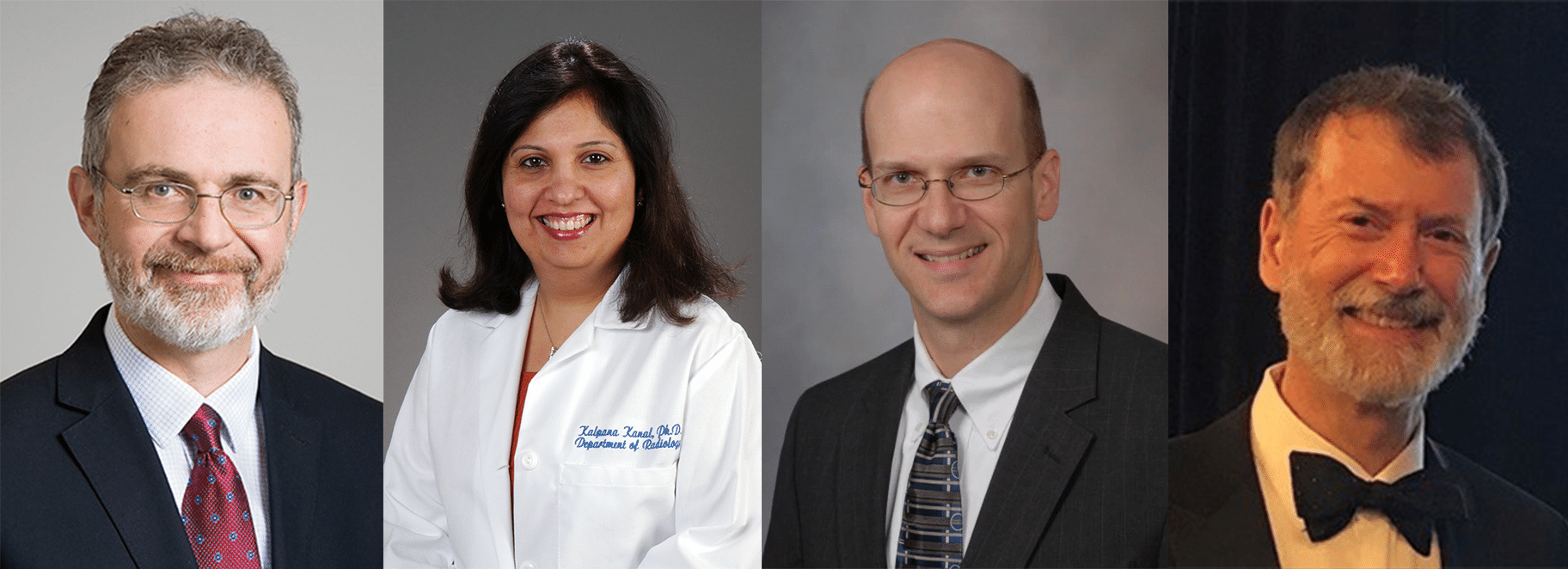Roles and Responsibilities of an ABR Trustee
By Matthew B. Podgorsak, PhD, ABR Board of Trustees Chair; Kalpana M. Kanal, PhD, and Robert A. Pooley, PhD, ABR Trustees; and Geoffrey S. Ibbott, PhD, ABR Associate Executive Director for Medical Physics
2023;16(4):7
The mission of the ABR is to “certify that our diplomates demonstrate the requisite knowledge, skill, and understanding of their disciplines to the benefit of patients.” This mission is achieved through the collective efforts of the Board of Governors (BOG), the Board of Trustees (BOT), the executive staff, and the many volunteers overseen by these groups. This article will focus on the roles and responsibilities of the professionals who comprise the BOT.
As communicated on the ABR’s website, the main responsibility of the BOT is to “advance the quality, relevance, and effectiveness of the ABR’s exams for Initial Certification across all disciplines of radiology.” The BOT also plays a large role in setting the standards for the Continuing Certification (MOC) program. While the BOT focuses on the content and structure of the exams, all strategic planning, priority setting, and finances associated with exams are referred to the BOG.
The BOT currently includes 20 members with specific specialty and subspecialty expertise: 10 diagnostic radiologists, three interventional radiologists, four radiation oncologists, and three medical physicists. The number of trustees changes from time to time in response to varied workloads associated with trustee responsibilities.
Trustees are volunteers who are appointed initially to a three-year term and can be reappointed for a second three-year term. In some circumstances, a trustee’s term can be extended for up to an additional two years. The BOT is led by a chair and four vice chairs, one for each specialty certified by the ABR. The chair is also a member of the BOG and provides input from the BOT to the BOG. Each specialty is assigned an associate executive director (AED) who works with the trustees to further the mission of the ABR.
Each group of trustees is responsible for overseeing their specialty’s Initial Certification and Continuing Certification programs. An important aspect of this responsibility is ensuring that all assessment tools include content that is consistent with current guidelines for training program curricula and is based on contemporary practice. Each group of trustees meets regularly both in person and via videoconference.
Each trustee oversees three to seven committees and works closely with the committee chair and ABR staff (exam developers) on all aspects of each committee’s work. This includes participating in committee review calls throughout the item-writing cycle during which new questions are processed; providing final review and approval of the content for an exam or OLA question set as developed by a committee; and reviewing exam results.
For specialties that administer an oral exam (currently interventional radiology/diagnostic radiology, medical physics, and radiation oncology), the trustees are involved in selecting examiners and working with their AED to provide training before each exam administration. On occasion, trustees participate as examiners, although the main trustee responsibility during an oral exam administration is to remotely observe examiners to confirm that they are complying with their training and following the ABR’s guidelines.
Trustees attend several in-person meetings during the year. These include an annual meeting of each committee attended by the committee chair, exam developers, and a subset of the committee members, where further content development and exam preparation take place. Trustees participate in the oral exams given by their specialties once in person and once remotely each year. Under the ABR’s current model, one annual oral exam administration is a hybrid event for examiners, with approximately 50 on-site in Tucson and the remainder examining from remote locations. Twice per year, trustees participate in an in-person board meeting where they collaborate with ABR governors, executives, directors, and selected staff. The BOT is active between retreats via remote meetings that are called by the BOT chair to discuss issues that cannot wait until a formal retreat. Typically, two to five such meetings take place each year. Finally, trustees meet with the leaders of their specialty’s professional organizations to obtain feedback from stakeholders and discuss topics of mutual interest.
The ABR’s mission could not be accomplished without the contributions of its trustees, who provide countless volunteer hours on behalf of the public through oversight of the Initial Certification and Continuing Certification programs.



